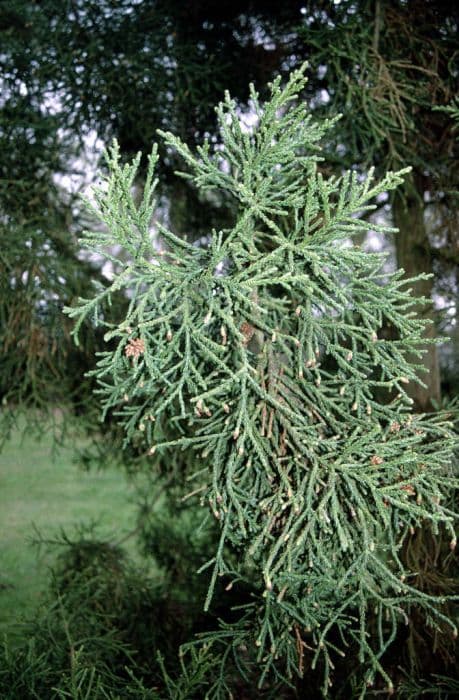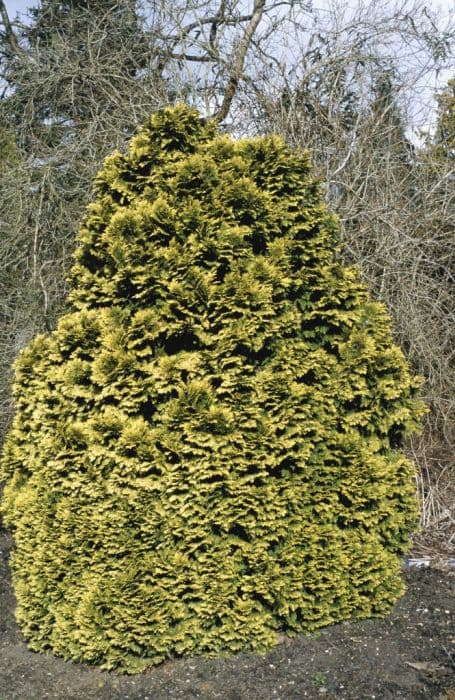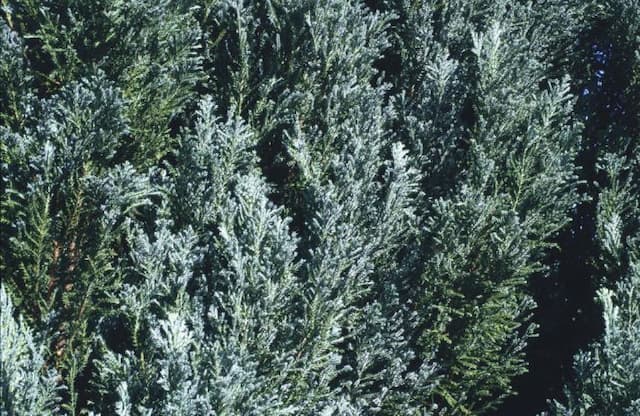Lawson's Cypress Chamaecyparis lawsoniana 'Golden Wonder'
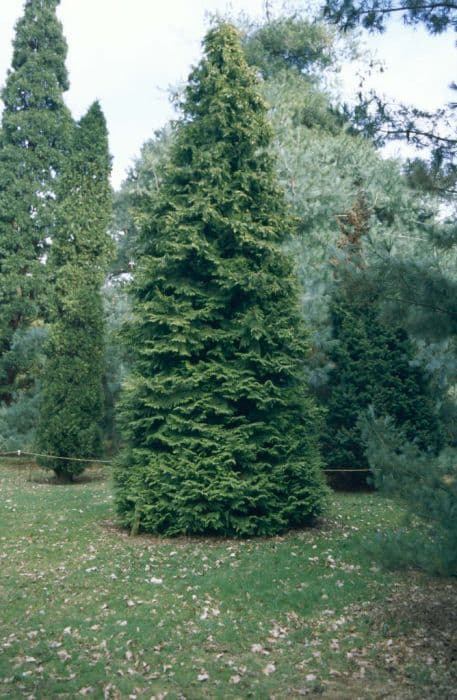
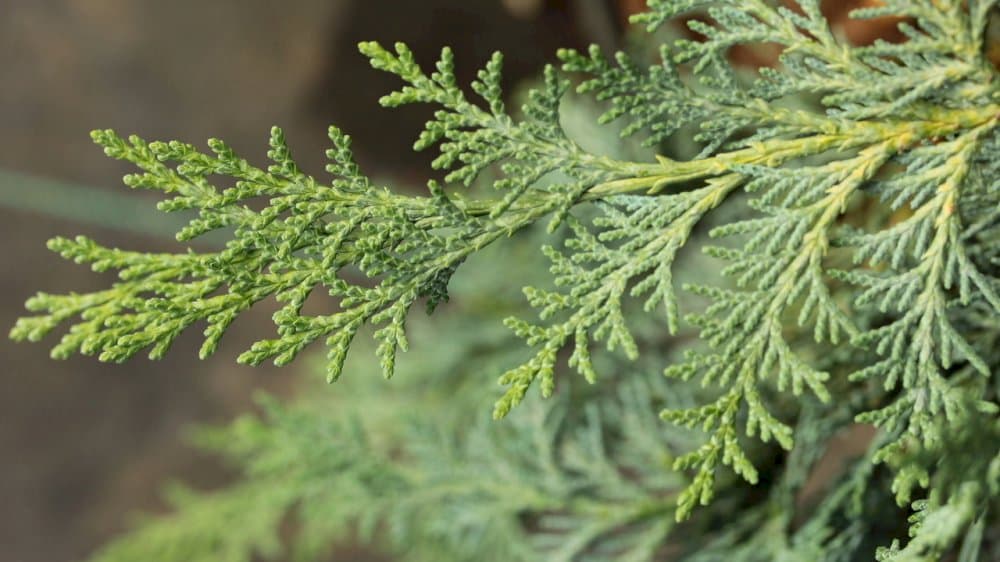


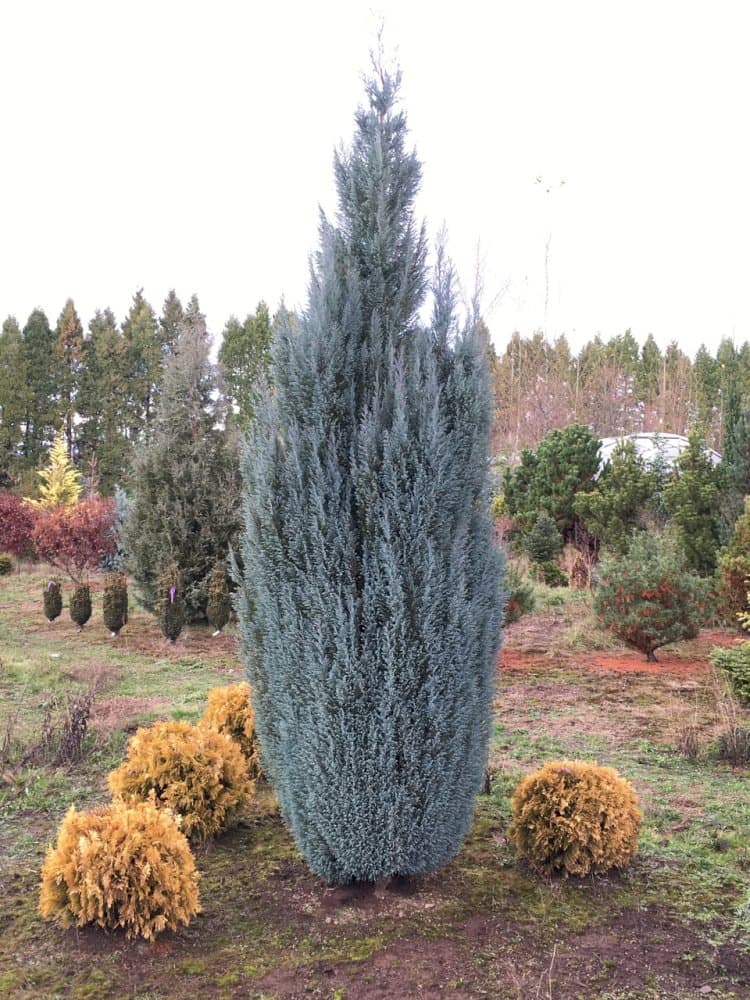
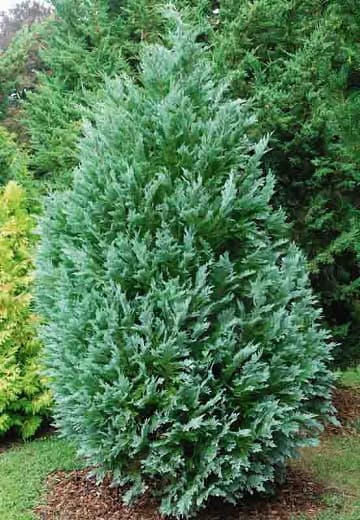
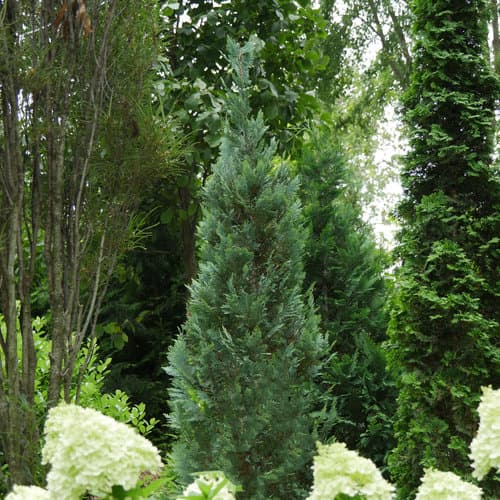
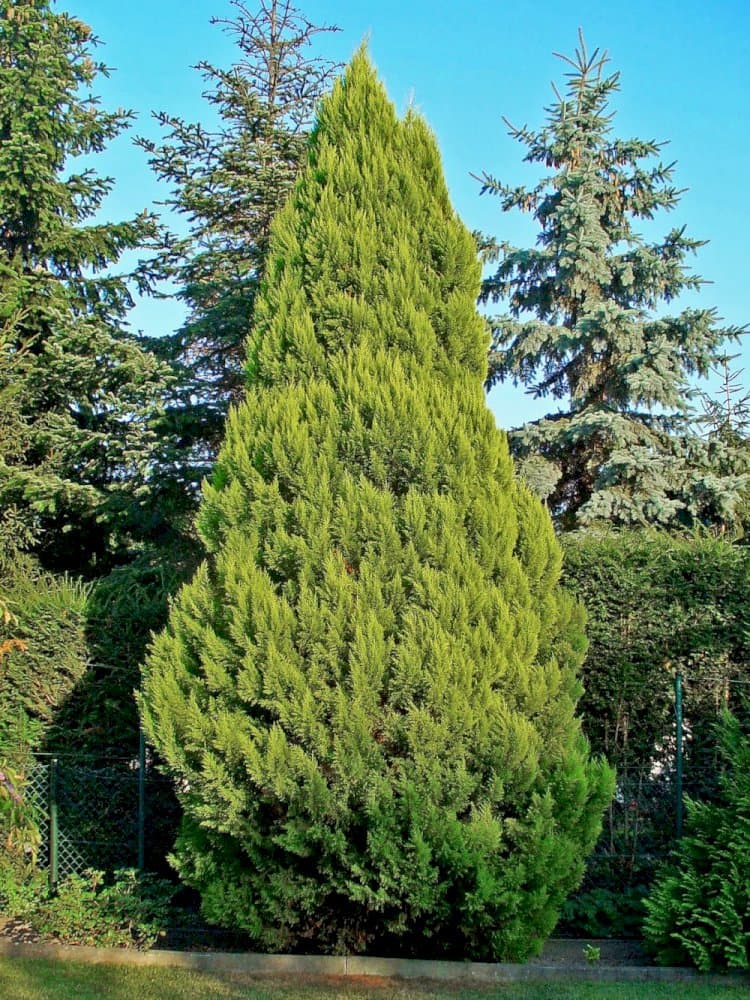
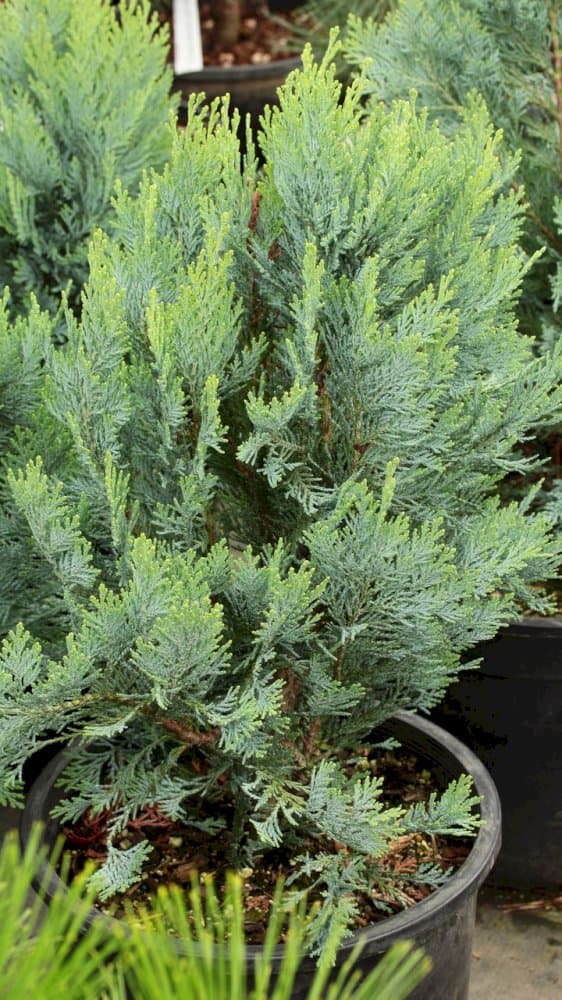
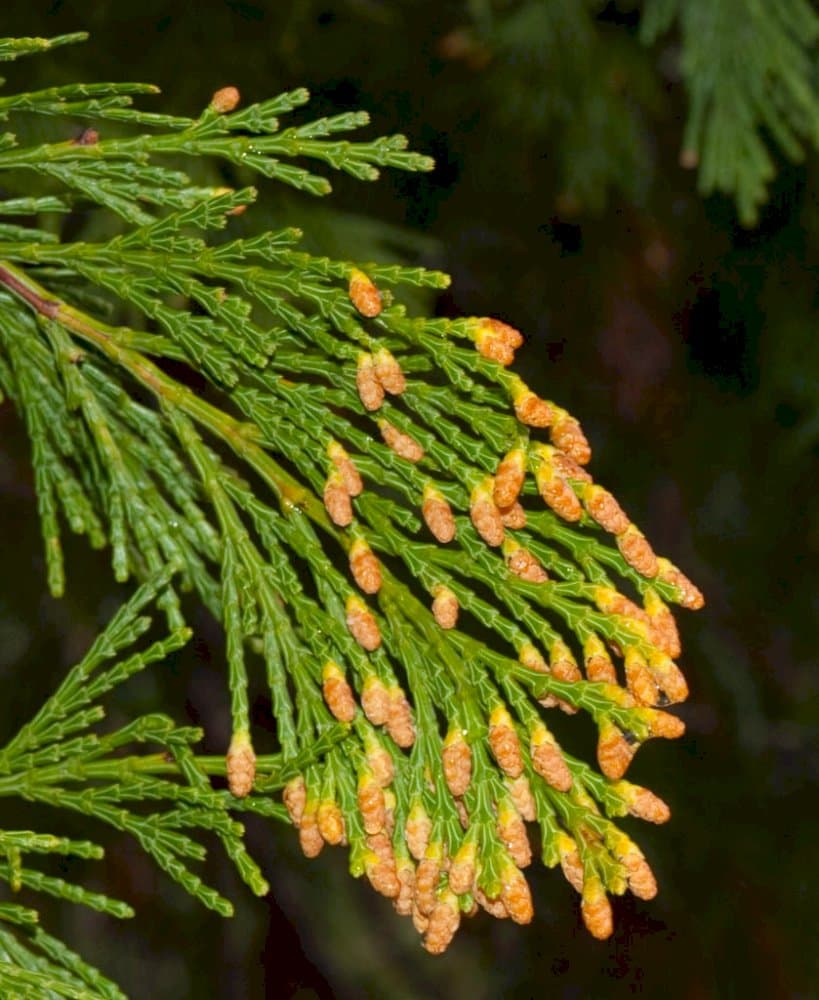
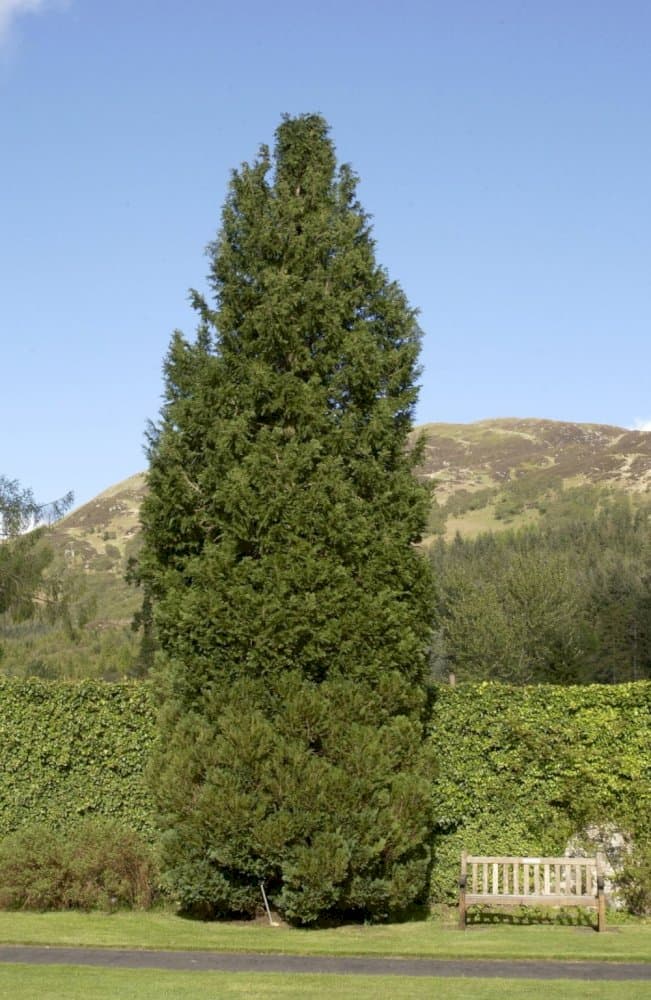
ABOUT
'Golden Wonder' is a striking variety of the Lawson's Cypress, characterized by its eye-catching foliage that has a rich golden-yellow hue, especially at the tips of the branches. The plant has a conical growth habit, meaning it is naturally shaped like a cone or pyramid. The leaves are evergreen, meaning they persist and remain colorful throughout the year, offering a constant display in gardens. The foliage of 'Golden Wonder' is formed from tiny, scale-like leaves that are pressed closely against the twigs, creating a dense, textured appearance. This foliage can sometimes display a greenish tint towards the interior of the plant where less sunlight penetrates, while the most golden colors are displayed on the sun-exposed outer foliage. This creates a lovely contrast within the plant itself. The branches of 'Golden Wonder' are relatively compact, contributing to the plant's dense look and feel. It exhibits a somewhat orderly growth pattern, which makes it a favorite for formal and well-maintained gardens. The overall impression of 'Golden Wonder' is that of a vibrant, shimmering presence in the landscape, with its golden foliage catching the light and adding warmth to the setting. Though the size of this particular variety is not up for discussion, it's important to note that 'Golden Wonder' can be quite versatile in gardens, often finding its place as a standalone specimen or as part of a carefully structured planting arrangement. It can provide year-round interest thanks to its evergreen nature and is particularly valued for the color it brings to the colder, bleaker months when many other plants have lost their leaves or have subdued tones.
About this plant
 Names
NamesFamily
Cupressaceae
Synonyms
Lawson's Cypress, Oregon Cedar, Port Orford Cedar, Golden Wonder Lawson Cypress
Common names
Chamaecyparis lawsoniana 'Golden Wonder'
 Toxicity
ToxicityTo humans
The plant commonly known as Lawson's Cypress is generally not considered highly toxic to humans. However, like many ornamental plants, it may cause minor skin irritation or an allergic reaction upon contact. If ingested, parts of the plant may cause gastrointestinal upset, such as nausea, vomiting, or diarrhea. It is always advisable to avoid ingesting parts of ornamental plants due to their potential toxicity.
To pets
Lawson's Cypress is also not highly toxic to pets, but consumption of the plant should still be discouraged. If a pet ingests a small amount, it may experience mild gastrointestinal distress, such as vomiting or diarrhea. Larger amounts could potentially lead to more severe symptoms, so it is best to keep this plant out of reach of pets and monitor them for any signs of illness if they are known to have ingested any part of the plant.
 Characteristics
CharacteristicsLife cycle
Perennials
Foliage type
Evergreen
Color of leaves
Golden
Height
10-15 feet (3-4.5 meters)
Spread
3-4 feet (0.9-1.2 meters)
Plant type
Tree
Hardiness zones
5-8
Native area
North America
Benefits
 General Benefits
General Benefits- Aesthetic Appeal: Chamaecyparis lawsoniana 'Golden Wonder', commonly known as Lawson's Cypress, adds ornamental value to gardens with its golden-yellow foliage and conical shape.
- Year-round Interest: Being an evergreen conifer, Lawson's Cypress provides color and structure to the landscape throughout all seasons.
- Wildlife Habitat: The dense foliage offers shelter and nesting sites for birds and other small wildlife.
- Privacy Screening: Due to its thick growth, it can be used as a natural privacy screen or hedge to delineate spaces and reduce noise pollution.
- Low Maintenance: Once established, Lawson's Cypress requires minimal care, with little need for pruning or special treatments.
- Drought Tolerance: It exhibits tolerance to drought conditions once it's established, making it suitable for regions with water scarcity.
- Adaptability: This plant adapts to a range of soil types, although it prefers moist, well-drained soils.
- Windbreak: The sturdy nature of Lawson's Cypress allows it to act as a windbreak, protecting landscapes from strong winds.
 Medical Properties
Medical PropertiesThis plant is not used for medical purposes.
 Air-purifying Qualities
Air-purifying QualitiesThis plant is not specifically known for air purifying qualities.
 Other Uses
Other Uses- Woodworking Projects: The durable wood of the Lawson's Cypress can be used for crafting small woodworking projects like boxes or picture frames.
- Model Making: The fine-grained wood is ideal for model making, often used by hobbyists for creating intricate pieces.
- Dye Production: The bark and foliage can be used to produce natural dyes for fabrics or artwork.
- Holiday Decorations: Branches from the Lawson's Cypress, especially those of the 'Golden Wonder' variety, are used in festive wreaths and garlands due to their golden foliage.
- Aquarium Decoration: After proper treatment, the wood can be used as a decorative element in aquariums.
- Bonsai: The 'Golden Wonder' can be trained as a bonsai for ornamental purposes in gardens and indoors.
- Scented Sachets: The foliage gives off a pleasant aroma and can be used to create scented sachets to freshen up drawers and closets.
- Wildlife Habitat: This plant can be used in garden landscaping to provide a habitat for birds, offering shelter and nesting opportunities.
- Windbreaks: On larger properties, these trees are planted to act as windbreaks to protect more sensitive plants and reduce soil erosion.
- Theme Gardens: Lawson's Cypress 'Golden Wonder' is utilized in color-themed gardens, where its golden foliage provides a striking contrast to plants with different foliage hues.
Interesting Facts
 Feng Shui
Feng ShuiThe Lawson's Cypress 'Golden Wonder' is not used in Feng Shui practice.
 Zodiac Sign Compitability
Zodiac Sign CompitabilityThe Lawson's Cypress 'Golden Wonder' is not used in astrology practice.
 Plant Symbolism
Plant Symbolism- Longevity: As an evergreen, Lawson Cypress 'Golden Wonder' represents eternal life and is often associated with longevity due to its long lifespan.
- Endurance: The hardy nature of this plant symbolizes the ability to endure and thrive in various conditions.
- Sanctuary: Historically, cypress trees are associated with protection and providing a safe haven, which carries over to this cultivar as well.
- Peace: The soothing greenery and stately form convey a sense of peace and tranquility.
- Healing: Green plants are commonly connected to health and healing, suggesting restoration and rejuvenation.
 Water
WaterThe Lawson's Cypress 'Golden Wonder' should be watered deeply and thoroughly to ensure the root zone is adequately moistened. It's best to water this plant once every week or two, depending on the weather conditions and soil moisture levels. During hot, dry periods, increase watering frequency to avoid drought stress. For an established plant, providing about 1-2 gallons of water per session should suffice to maintain soil moisture. Ensure the plant is not left in standing water, which could lead to root rot. Watering in the morning is ideal, as this allows foliage to dry out over the course of the day.
 Light
LightLawson's Cypress 'Golden Wonder' thrives best in full sun to partial shade. It requires at least 4-6 hours of direct sunlight daily for optimal growth and foliage color. The ideal spot for this plant would be an area that gets plenty of morning light and some afternoon shade, especially in regions with very hot summers to prevent scorching.
 Temperature
TemperatureThe Lawson's Cypress 'Golden Wonder' is hardy and can tolerate a range of temperatures. It can withstand minimum temperatures down to about -20°F and maximum temperatures that don't consistently exceed 95°F. The ideal temperature range for robust growth is between 60°F and 75°F. Avoid exposing the plant to extreme temperature fluctuations, which can stress it and affect its health.
 Pruning
PruningPruning is important for Lawson's Cypress 'Golden Wonder' to maintain its desired shape and to encourage healthy growth. Prune lightly in the early spring before new growth begins, shaping as needed and removing any dead or damaged branches. Additionally, trim back any growth that is encroaching on other plants or structures. This cypress may not require frequent pruning; once a year or every other year is often enough. Best time for pruning is late winter or early spring, just before the onset of the growing season.
 Cleaning
CleaningAs needed
 Soil
SoilLawson's Cypress 'Golden Wonder' thrives in moist, well-draining soil with an acidic to neutral pH of about 5.0 to 7.0. A mix of peat, sand, and loamy soil can provide the ideal texture and fertility for this evergreen conifer for optimal growth. Ensuring good drainage is crucial to prevent root rot.
 Repotting
RepottingLawson's Cypress 'Golden Wonder' typically needs repotting every two to three years as it is a relatively slow-growing conifer. Repotting should be done in the spring before the onset of the new growth cycle. Choose a slightly larger pot to accommodate the root system without oversizing, as this can lead to waterlogged soil.
 Humidity & Misting
Humidity & MistingLawson's Cypress 'Golden Wonder' fares well in average outdoor humidity conditions. It does not have specific humidity requirements, but as an evergreen suited to cooler climates, natural atmospheric moisture is generally sufficient. It's hardy and doesn't necessitate high humidity levels to thrive.
 Suitable locations
Suitable locationsIndoor
Place Lawson's Cypress 'Golden Wonder' by a bright window, away from heat sources.
Outdoor
Plant in sun to partial shade, protect from harsh winds.
Hardiness zone
5-8 USDA
 Life cycle
Life cycleChamaecyparis lawsoniana 'Golden Wonder', commonly known as the Lawson's Cypress 'Golden Wonder', begins its life cycle when seeds are produced by mature cones and subsequently germinate, often requiring a period of stratification to break dormancy. Seedlings emerge and establish themselves, entering a juvenile phase where they focus on root and foliage development. As the plant enters its vegetative stage, it forms a distinctive conical shape and develops its characteristic golden-yellow foliage with dense, scale-like leaves. Over the years, this evergreen continues to grow, potentially reaching up to 15 feet tall and 4 feet wide, and begins producing cones once it reaches maturity after several years. The mature Lawson's Cypress 'Golden Wonder' then enters a reproductive phase annually, with male and female cones developing on the same plant; pollination occurs typically through wind dispersal. Eventually, as the plant ages, it may experience a decline in vigor and productivity until it dies, completing its life cycle.
 Propogation
PropogationPropogation time
Late summer
The Lawson's cypress 'Golden Wonder' is most commonly propagated via semi-hardwood cuttings. This type of propagation typically takes place in late summer to early autumn. To propagate from semi-hardwood cuttings, a piece of this season's growth is snipped, usually about 4 to 6 inches (10 to 15 centimeters) in length. Each cutting should have several sets of leaves. The lower set of leaves is removed, and the cut end is often dipped in rooting hormone to encourage root development. The cutting is then planted in a well-draining potting mix, usually in a container or a nursery bed. It is kept moist and in a sheltered, warm environment until the cutting has rooted, which can take several months.
